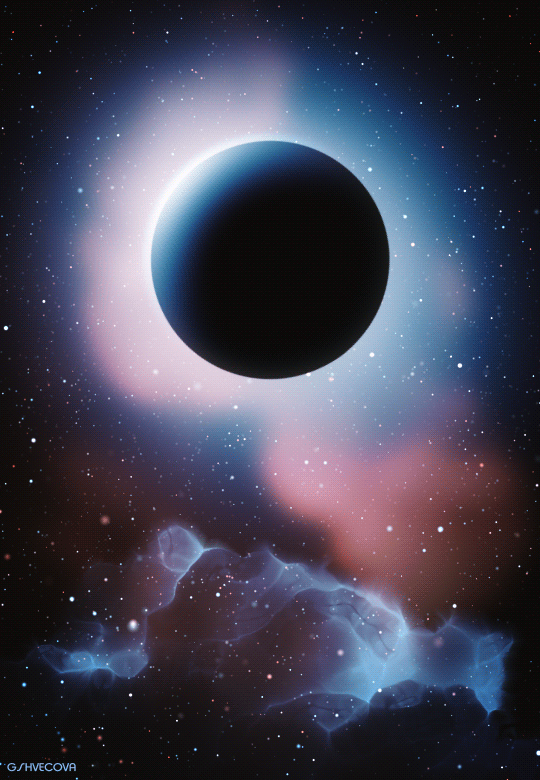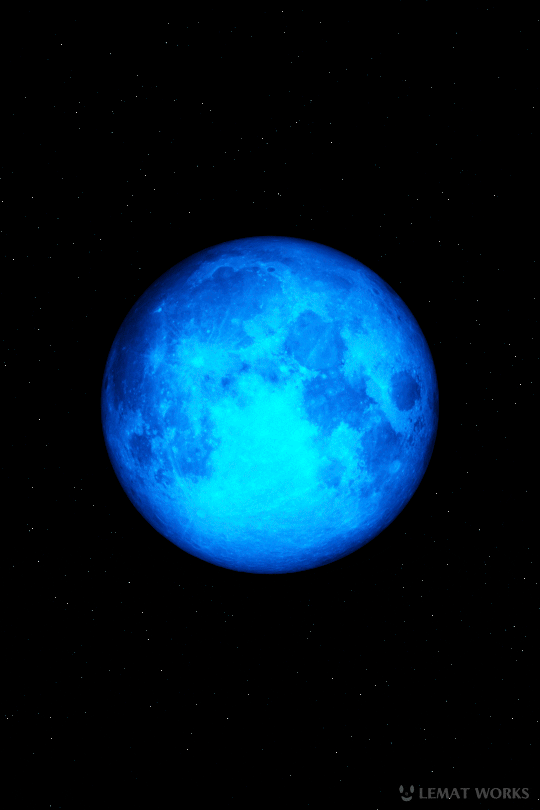Mustang B51 Warbird

Mustang B51 Warbird
© Scott Slocum
More Posts from Epic-flight and Others

Art G.Shvecova (Design graphics - Black-hole_080218)

What caused this outburst of this star named V838 Mon? For reasons unknown, this star’s outer surface suddenly greatly expanded with the result that it became the brightest star in the entire Milky Way Galaxy in January 2002. Then, just as suddenly, it faded. A stellar flash like this had never been seen before – supernovas and novas expel matter out into space.
Although the V838 Mon flash appears to expel material into space, what is seen in the above GIF from the Hubble Space Telescope is actually an outwardly moving light echo of the bright flash.
In a light echo, light from the flash is reflected by successively more distant rings in the complex array of ambient interstellar dust that already surrounded the star. V838 Mon lies about 20,000 light years away toward the constellation of the unicorn (Monoceros), while the light echo above spans about six light years in diameter.
Credit: NASA, ESA
To discover more, visit: https://www.nasa.gov/multimedia/imagegallery/image_feature_2472.html

Winter - 220102

Cylinder Fragments - 230322
#animation #collage #space #dream #ungifdanstagueule #ugdtg #nicolasmonterrat #gif https://www.instagram.com/p/CBarP-UKt3x/?igshid=l1f6svkj0b1b

A crater on Mars, observed by the Mars Reconnaissance Orbiter: “This impact crater appears relatively recent as it has a sharp rim and well-preserved ejecta, the material thrown out of the crater when a meteorite hit Mars. The steep inner slopes are carved by gullies and include possible recurring slope lineae (known as RSL) on the equator-facing slopes. RSL could be a sign that water, its freezing point lowered by a high concentration of salt, could be seeping down these steep slopes. MRO has seen RSL appear in warmer seasons and disappear in cooler seasons in a few locations on Mars, indicating a planet with plenty of active processes.” (NASA)
The amazing final seconds of yesterday’s Starship landing. @spacex https://www.instagram.com/p/CInrXfSniww/?igshid=1b5o8ndalzcq9

Godspeed and blue skies, General Yeager art by Romain Hugault

The Dark Seahorse in Cepheus : Light-years across, this suggestive shape known as the Seahorse Nebula appears in silhouette against a rich, luminous background of stars. Seen toward the royal northern constellation of Cepheus, the dusty, obscuring clouds are part of a Milky Way molecular cloud some 1,200 light-years distant. It is also listed as Barnard 150 (B150), one of 182 dark markings of the sky cataloged in the early 20th century by astronomer E. E. Barnard. Packs of low mass stars are forming within, but their collapsing cores are only visible at long infrared wavelengths. Still, the colorful stars of Cepheus add to this pretty, galactic skyscape. via NASA
-
 bouncer123-blog1 reblogged this · 2 weeks ago
bouncer123-blog1 reblogged this · 2 weeks ago -
 asianricesposts liked this · 10 months ago
asianricesposts liked this · 10 months ago -
 pstar6 liked this · 1 year ago
pstar6 liked this · 1 year ago -
 crocodiledeathspin liked this · 1 year ago
crocodiledeathspin liked this · 1 year ago -
 nelvaz25 liked this · 1 year ago
nelvaz25 liked this · 1 year ago -
 oudai liked this · 2 years ago
oudai liked this · 2 years ago -
 garuda606 reblogged this · 2 years ago
garuda606 reblogged this · 2 years ago -
 garuda606 liked this · 2 years ago
garuda606 liked this · 2 years ago -
 sillyballer liked this · 2 years ago
sillyballer liked this · 2 years ago -
 mustbealoosewire reblogged this · 2 years ago
mustbealoosewire reblogged this · 2 years ago -
 wolfhowl43 liked this · 3 years ago
wolfhowl43 liked this · 3 years ago -
 aviationgeek71 liked this · 3 years ago
aviationgeek71 liked this · 3 years ago -
 cipilgoz liked this · 3 years ago
cipilgoz liked this · 3 years ago -
 purplefestivalbagelwinner liked this · 3 years ago
purplefestivalbagelwinner liked this · 3 years ago -
 kopender10 liked this · 3 years ago
kopender10 liked this · 3 years ago -
 daddydenny liked this · 3 years ago
daddydenny liked this · 3 years ago -
 pk-17 liked this · 3 years ago
pk-17 liked this · 3 years ago -
 aviationwarhistory reblogged this · 3 years ago
aviationwarhistory reblogged this · 3 years ago -
 shanben5liu reblogged this · 3 years ago
shanben5liu reblogged this · 3 years ago -
 shanben5liu liked this · 3 years ago
shanben5liu liked this · 3 years ago -
 jojo67811 liked this · 3 years ago
jojo67811 liked this · 3 years ago -
 alexxlove liked this · 3 years ago
alexxlove liked this · 3 years ago -
 0368591 liked this · 3 years ago
0368591 liked this · 3 years ago -
 strstruckcomiccsanimeoperator liked this · 3 years ago
strstruckcomiccsanimeoperator liked this · 3 years ago -
 redcheezer liked this · 3 years ago
redcheezer liked this · 3 years ago -
 bishybarneybee reblogged this · 3 years ago
bishybarneybee reblogged this · 3 years ago -
 yqsan reblogged this · 4 years ago
yqsan reblogged this · 4 years ago -
 nkoobsuhoi liked this · 4 years ago
nkoobsuhoi liked this · 4 years ago -
 kryten66 reblogged this · 4 years ago
kryten66 reblogged this · 4 years ago -
 kryten66 liked this · 4 years ago
kryten66 liked this · 4 years ago -
 supernicksterposts liked this · 4 years ago
supernicksterposts liked this · 4 years ago -
 enjoy003 reblogged this · 4 years ago
enjoy003 reblogged this · 4 years ago

